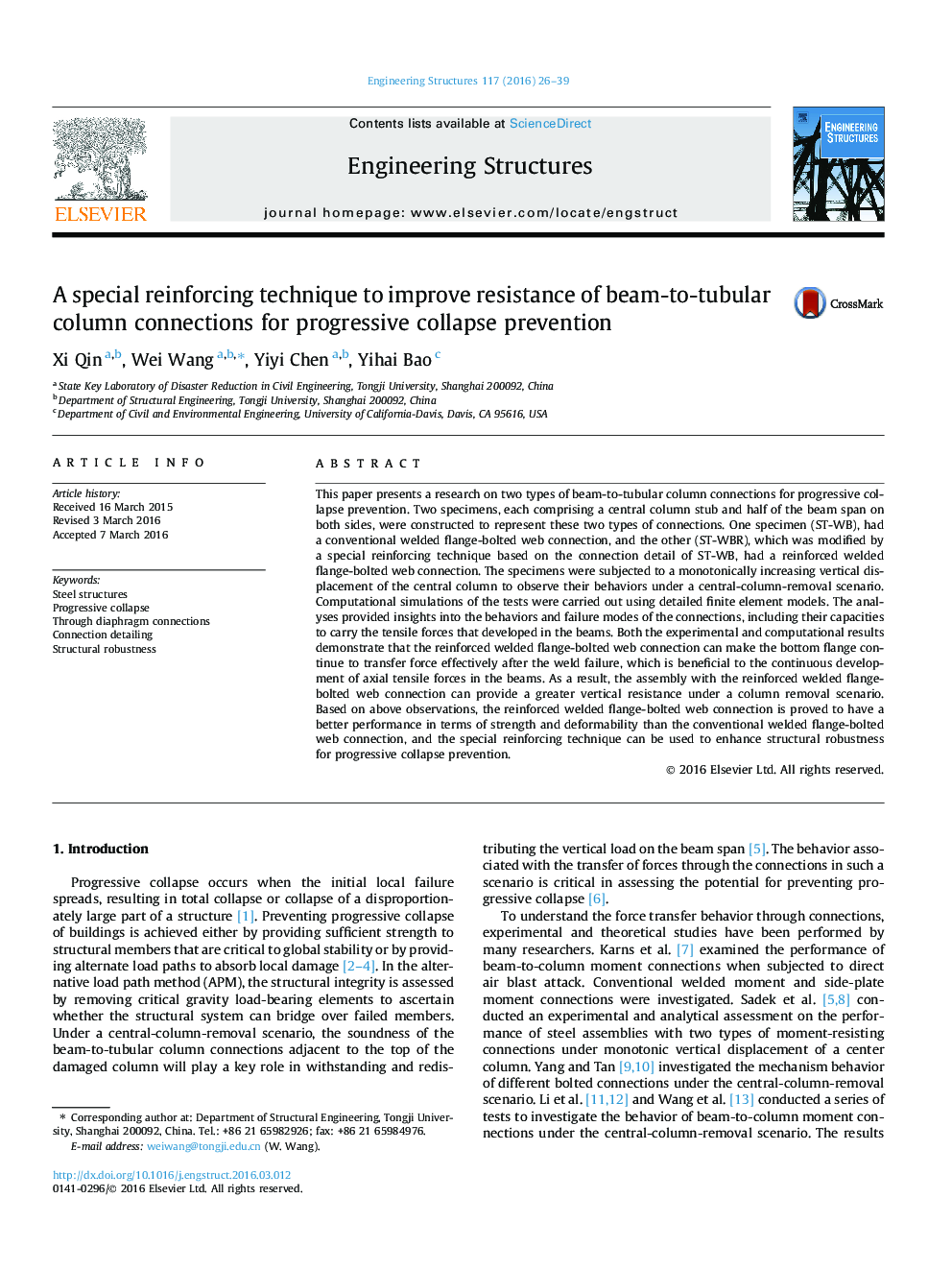| Article ID | Journal | Published Year | Pages | File Type |
|---|---|---|---|---|
| 6739927 | Engineering Structures | 2016 | 14 Pages |
Abstract
This paper presents a research on two types of beam-to-tubular column connections for progressive collapse prevention. Two specimens, each comprising a central column stub and half of the beam span on both sides, were constructed to represent these two types of connections. One specimen (ST-WB), had a conventional welded flange-bolted web connection, and the other (ST-WBR), which was modified by a special reinforcing technique based on the connection detail of ST-WB, had a reinforced welded flange-bolted web connection. The specimens were subjected to a monotonically increasing vertical displacement of the central column to observe their behaviors under a central-column-removal scenario. Computational simulations of the tests were carried out using detailed finite element models. The analyses provided insights into the behaviors and failure modes of the connections, including their capacities to carry the tensile forces that developed in the beams. Both the experimental and computational results demonstrate that the reinforced welded flange-bolted web connection can make the bottom flange continue to transfer force effectively after the weld failure, which is beneficial to the continuous development of axial tensile forces in the beams. As a result, the assembly with the reinforced welded flange-bolted web connection can provide a greater vertical resistance under a column removal scenario. Based on above observations, the reinforced welded flange-bolted web connection is proved to have a better performance in terms of strength and deformability than the conventional welded flange-bolted web connection, and the special reinforcing technique can be used to enhance structural robustness for progressive collapse prevention.
Related Topics
Physical Sciences and Engineering
Earth and Planetary Sciences
Geotechnical Engineering and Engineering Geology
Authors
Xi Qin, Wei Wang, Yiyi Chen, Yihai Bao,
